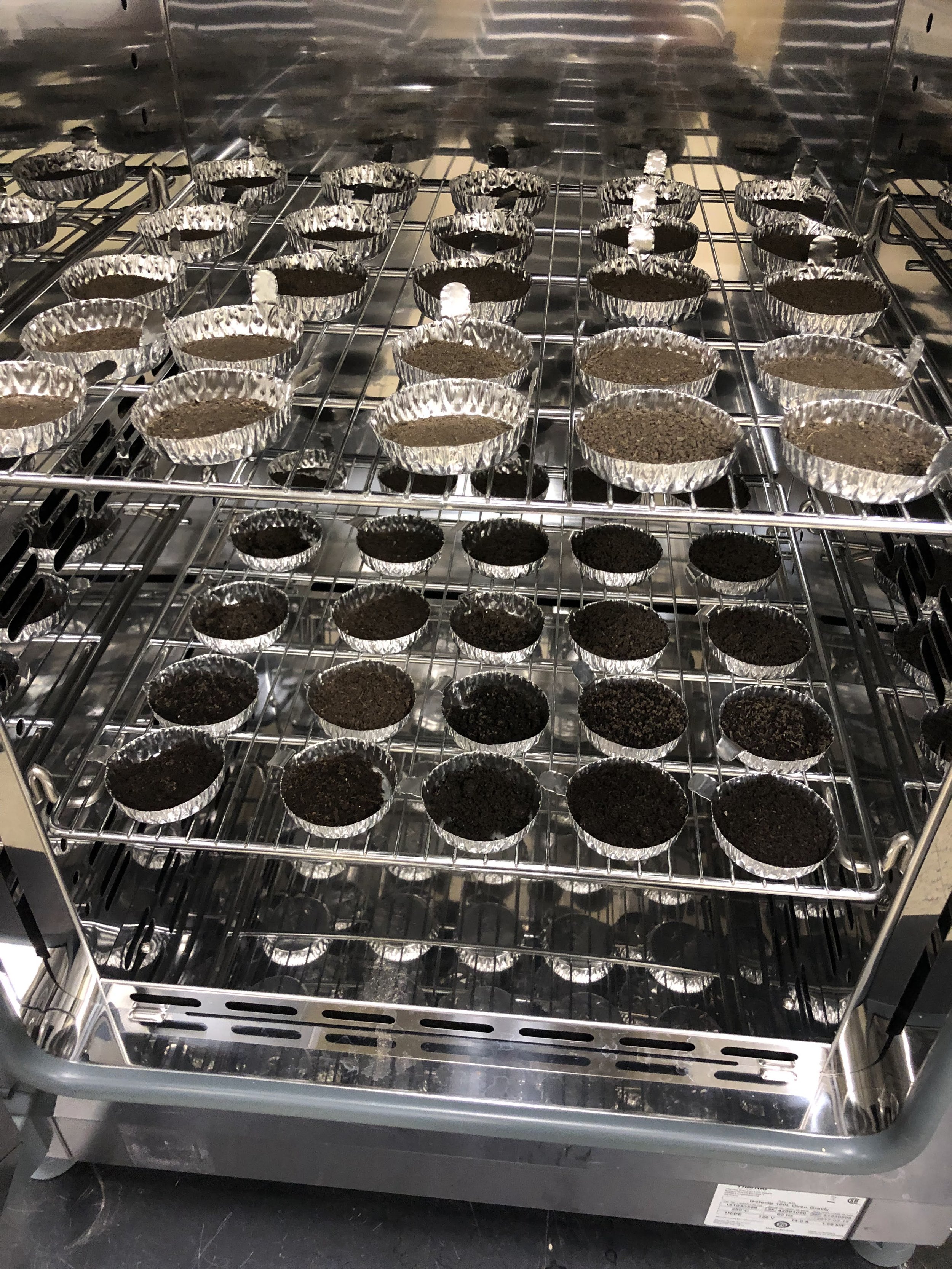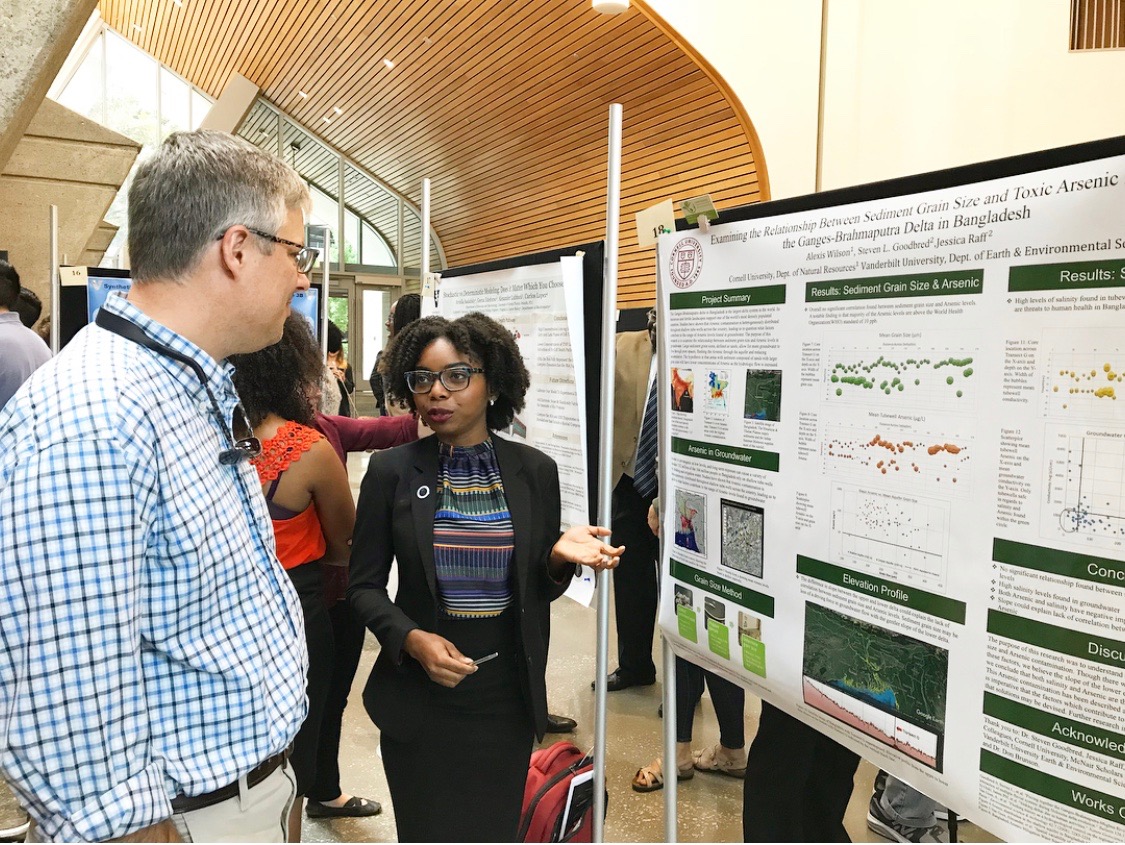
Current Projects
Toxic Soil: Assessing Heavy Metal Contamination in Urban Gardens across the San Francisco Bay Area
Using soil biogeochemistry to promote environmental justice
Dissertation Summary: Urban agriculture is defined as areas within cities used for growing crops or raising small livestock, either for personal consumption or sale. It is practiced because of the economic, environmental, cultural, and educational benefits it provides. Urban gardens are important to communities of color and low-income communities in particular because they are spaces for building and sustaining communities and increasing food security. However, since these sites exist in urban areas, there is a risk that garden soils may be contaminated with heavy metal(loid)s such as lead, cadmium, chromium, and arsenic which are common urban soil contaminants due to anthropogenic activities and pose a serious health risk to those exposed.
The combination of urban food insecurity and soil contamination becomes an Environmental Justice issue because research indicates that communities of color and low-income communities disproportionately face food insecurity and exposure to environmental pollution. While researchers have broadly characterized overall patterns of soil contamination in urban areas, levels of metal contamination and exposure threats are still lacking for urban agricultural spaces. As such, the overall goal of this research is to use an interdisciplinary approach, using Environmental Justice and Community-Based Participatory Research as foundational frameworks, to advance our understanding of the threat of soil contamination to urban gardens across the San Francisco Bay Area, specifically focusing on marginalized communities.
The results of this work will contribute to a better understanding of heavy metal contamination in urban gardens, the health risk associated with exposure, and techniques for mitigating heavy metals in garden soils. Overall, the goal of my research is to ensure that all communities can safely participate in urban agriculture and enjoy its many benefits.
Chapter 1: Assessing Urban Gardener’s Knowledge and Concern of Soil Contamination in Palo Alto and East Palo Alto, California
PhD Dissertation Chapter, Stanford Doerr School of Sustainability, Department of Earth System Science, Co-advised by Dr. Chris Field and Dr. Scott Fendorf
Summary: The overall purpose of this study is to assess the soil health and safety of urban home and community gardens in East Palo Alto and Palo Alto, CA. Specifically, I am examining if the soils are contaminated by heavy metals such as lead and arsenic. In order to assess any risk to gardeners of using the site, we must better understand how the garden is managed and engaged with, what knowledge gardeners have of soil contamination, and how they perceive their risk of exposure to heavy metals in soil. To do so, I am conducting semi-structured interviews of home and community gardeners. Participants will also have the option to receive free soil testing which will provide data on soil nutrient and heavy metal content. Through this study we will better understand urban gardener’s knowledge and perception of risk for heavy metal soil contamination, be able to compare results based on demographics and location (EPA vs PA), and finally have quantitative results on soil contamination levels. Improving how gardeners are educated on soil pollution as a hazard and increasing access to soil testing may help reduce their risk of exposure to toxic metals in garden soil.
Chapter 2: Assessing Heavy Metal Contamination in Urban School Garden Soils in Northern California
PhD Dissertation Chapter, Stanford Doerr School of Sustainability, Department of Earth System Science, Co-advised by Dr. Chris Field and Dr. Scott Fendorf
Summary: The purpose of this research is to assess heavy metal concentrations in school garden soils and the exposure risk to students and staff within an urban center in Northern California. Through a community-based partnership with a school district, a multidisciplinary approach was taken to assess 20 school sites that have different socioeconomic and environmental histories. Fieldwork was conducted for the collection of soil samples while lab work consisted of soil characterization (pH, organic matter content, etc.) and the use of X-Ray Fluorescence Spectrometry to determine heavy metal concentrations. This research will provide an increased understanding of the risk of exposure to lead in urban school garden soils and its particular impact on low-income and communities of color. The overall goal of this study is to ensure that students and staff can safely enjoy the educational and nutritional benefits of urban agriculture in their schools
Image of a multiple raised garden beds in an outdoor community garden
An image of the research recruitment flyer taped to a wooden pole.
Am image of soil samples in an oven for drying
An image of Alexis holding ziplock baags of soil samples
Past Projects
Effect of Drought on Leaf Litter Decomposition in a Hardwood Forest, Northeastern United States
Senior Honors Thesis, Cornell University, College of Agriculture and Life Sciences, Department of Natural Resources, May 2019, under the supervision of Dr. Joseph Yavitt
Summary: The rate of litter decomposition is impacted by multiple factors, including temperature, precipitation, and the microbial community. The impact of drought on litter decomposition in terrestrial ecosystems is still poorly understood. In 2016, central New York State experienced a severe drought, and deciduous trees went through their growing season with minimal soil water levels. In 2017, precipitation returned to normal and these trees experienced a growing season with adequate soil water levels. We hypothesized that leaves grown under drought-conditions would have altered leaf quality and differ in mass loss compared to leaves grown under non-drought conditions. Leaf samples from five broadleaf, deciduous tree species (Acer saccharum, Ostrya virginiana, Quercus rubra, Quercus alba, and Tilia americana) were collected in 2016 and 2017 in a hardwood forest plot in Ithaca, NY. Samples of both drought and non-drought leaf litter for each species were placed in litterbags, in the same field plot in which they were collected, for a year-long decomposition study. Leaf samples were analyzed for mass loss and chemical composition, and the field site was characterized through soil analysis and observational studies.
Publication Title: Litter quality and decomposition responses to drought in a northeastern US deciduous forest
Published in Oecologia, Ecosystem ecology – original research on September 21, 2022
DOI: https://doi.org/10.1007/s00442-022-05263-z
At my field site in Ithaca, NY. I am collecting the samples for my senior thesis after a year long decomposition study.
My PI, Dr. Joseph Yavitt, and I at the RCPRS Senior Exposition. I just successfully presented my senior thesis.
Examining the Relationship between Edaphic Variables and the Root System of Abies concolor in the southern Sierra Nevada
Summer Undergraduate Research in Geoscience and Engineering Program (SURGE), Stanford University, Department of Earth System Science, 2017, Dr. Robert B. Jackson and Shersingh Tumber-Davila
Summary: The purpose of this research was to understand the potential impact of drought and climate-induced stress on forest systems, particularly tree mortality in the southern Sierra Nevada. We examined environmental factors that may contribute to root zone variability and belowground biomass investment by individual plants, which may impact their ability to adapt to water stress. In the Sierra-Nevada Mountains we collected soil and root samples through extensive coring, which I analyzed back in the lab. Including but not limited to, soil texture, water holding capacity, pH, root biomass, etc.
My final poster presentation for the SURGE program.
Oral Presentation at the SURGE Final Research Symposium
My SURGE Cohort. “Pose for the camera. Now flick flick.”-Beyoncé
Getting down and dirty sieving soil for hours. Also my first time camping, EVER.
The Other Side of Science: How Renewable Energy Development is Perpetuating Environmental Injustice
SIT World Learning, International Honors Program, Climate Change: The Politics of Food, Water, and Energy in Vietnam, Morocco, & Bolivia, 2018
Summary: During my study abroad program, I completed a research project focusing on how renewable energy development in Vietnam and Morocco perpetuated environmental injustice. I utilized theoretical frameworks and qualitative and quantitative data collected through interviews and literature reviews, drawing on both theory and lived experiences. I focused on two case studies in this project, the Dak Mi 4 hydropower plant in Vietnam and the Noor Ouarzazate 1 solar power plant in Morocco.
Mural in Richmond, California
View from the Dak Mi 4 Hydropower Plant
During the final presentation of my research project.
Examining the Relationship Between Sediment Grain Size and Toxic Arsenic Levels in the Ganges-Brahmaputra Delta in Bangladesh
Leadership Alliance Summer Research-Early Identification Program, Vanderbilt University, Department of Earth and Environmental Sciences, 2018, Dr. Steven L. Goodbred and Jessica Raff.
Summary: The Ganges-Brahmaputra Delta supports one of the world’s most densely populated areas. However, arsenic is heterogeneously distributed across the landscape, contaminating groundwater used by over 100 million people in Bangladesh. The purpose of this research was to understand factors which contribute to the distribution and range of Arsenic levels found in groundwater. This research focused on sediment grain size as a possible explanation. I analyzed sediment samples collected in Bangladesh for sediment type and particle size, then correlated this with Arsenic data across the delta. I am thankful to Dr. Goodbred and the Vanderbilt team for taking me to Bangladesh to work with a team of brilliant scientists and explore and learn about the beautiful country and landscape firsthand.
Presenting my final poster at the Vanderbilt Summer Science Academy Research Symposium, to my mentor Dr. Goodbred.
I turned 21 in Bangladesh. Thank you to the team for my surprise party, with cake! Photo Credits: Andre
The team starting a day of exploration and learning.

















